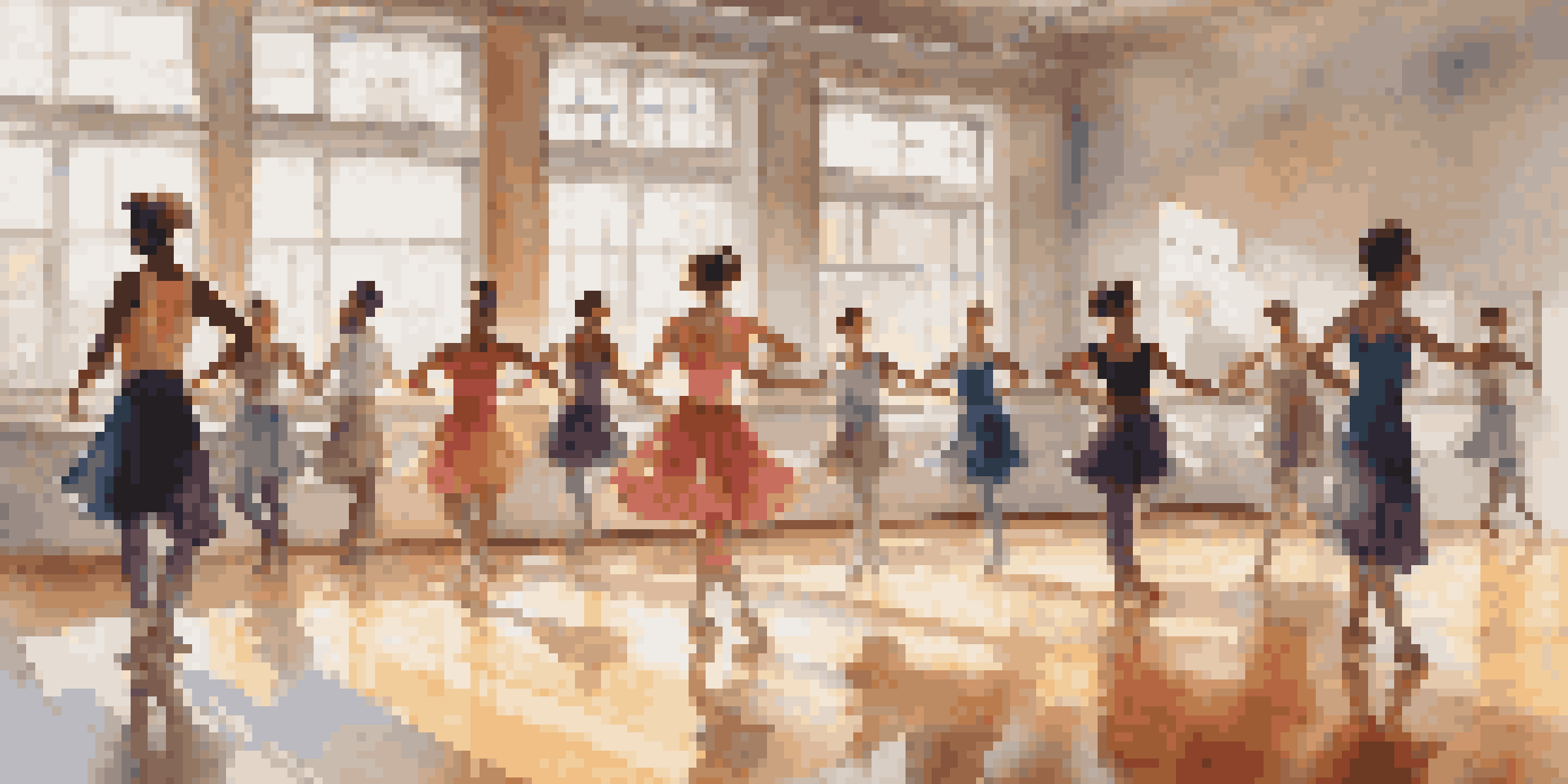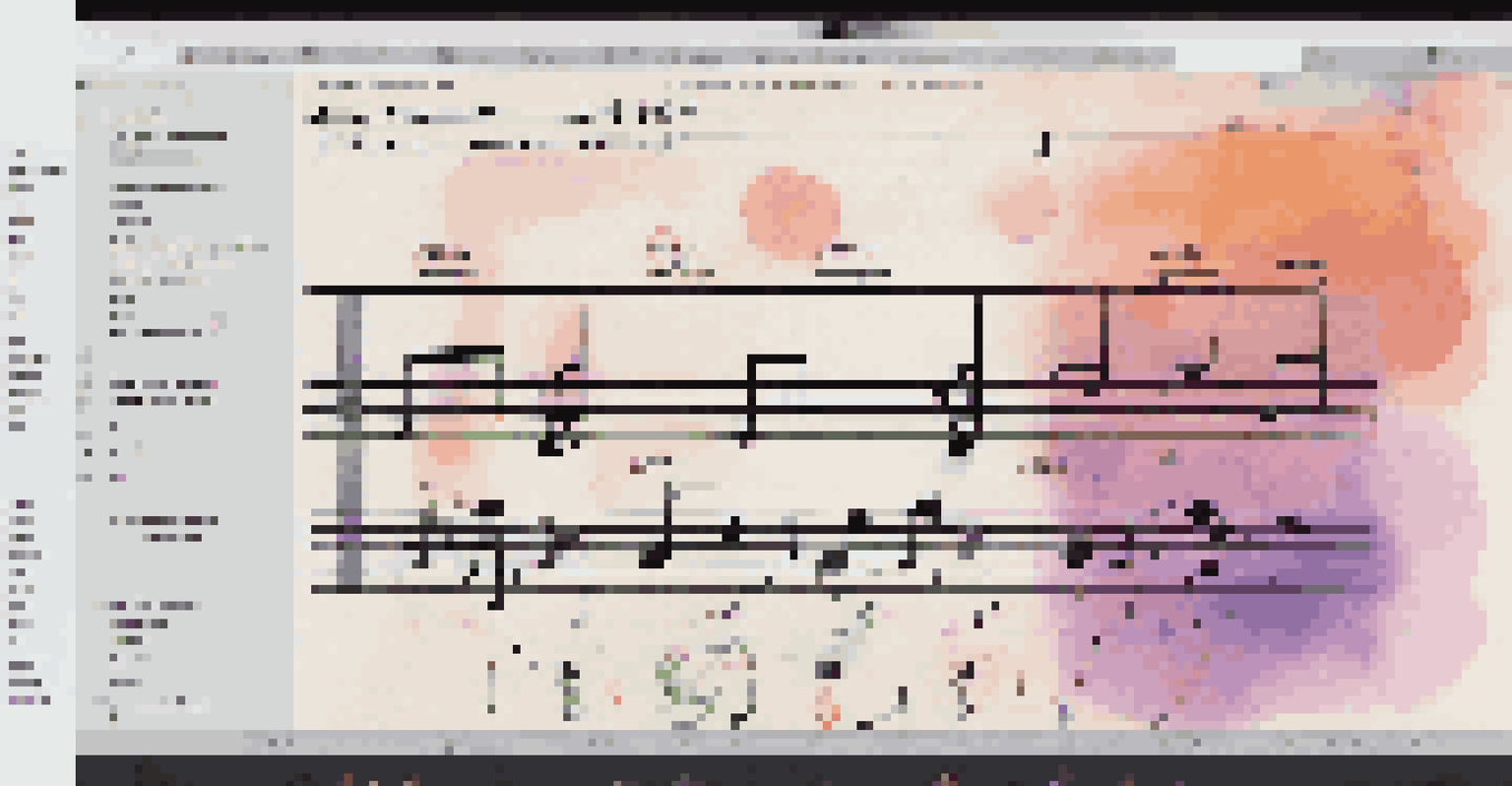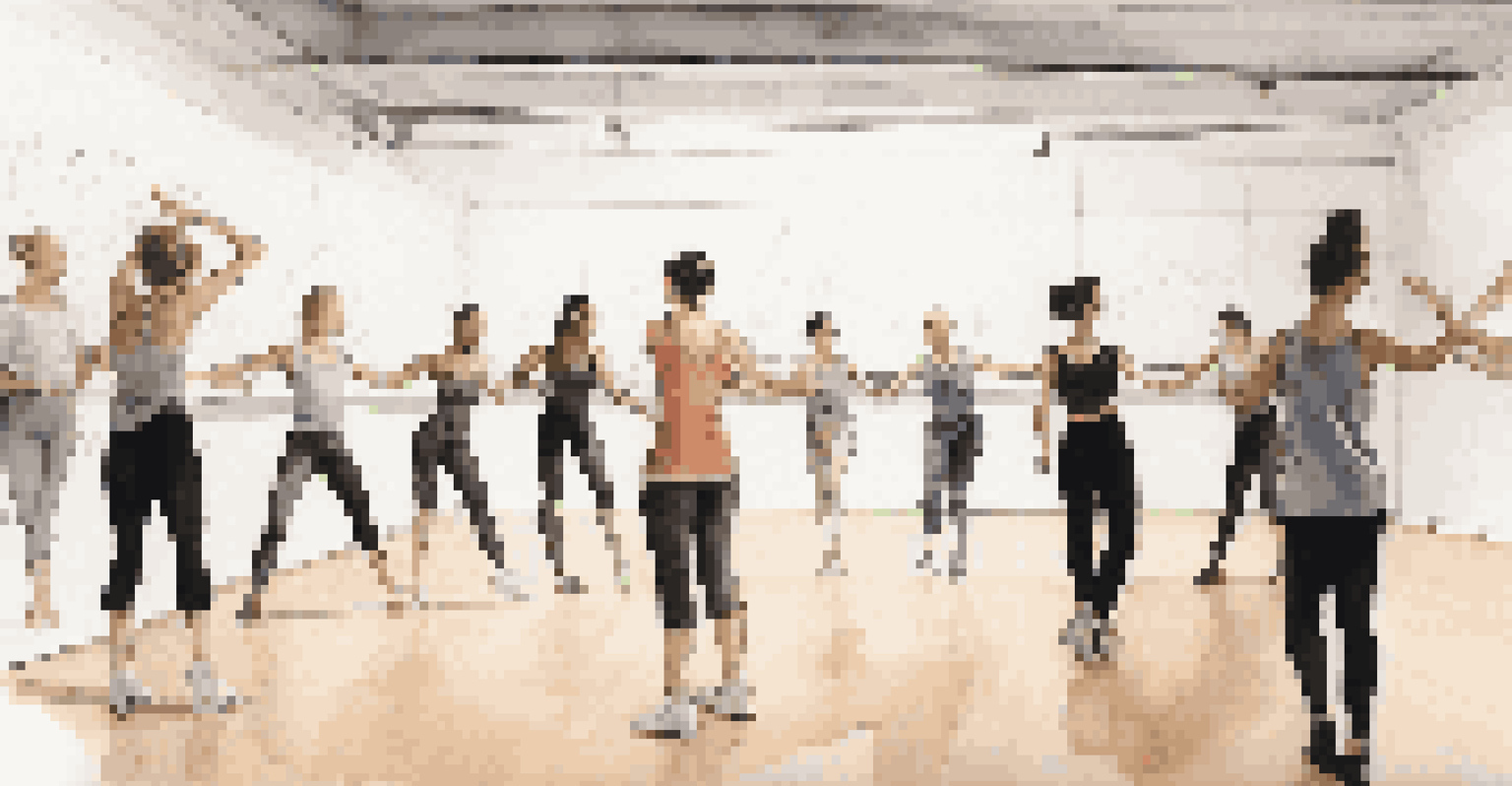Dance Notation Software: Tools for Choreographers Today

Understanding Dance Notation Software and Its Importance
Dance notation software serves as a digital means to document choreography. Just like a written score for music, it captures the movement and timing of a dance piece. This technology allows choreographers to preserve their work for future generations and share it with dancers who may not be familiar with the original creation.
Dance is the hidden language of the soul.
The importance of such software cannot be overstated. In a world where dance can be ephemeral, having a written record ensures that the nuances and intricacies of a piece are not lost over time. It offers a universal language that transcends cultural and linguistic barriers, making dance more accessible to everyone.
Moreover, dance notation software enables collaboration among choreographers, dancers, and educators. By providing a clear visual representation of movements, it facilitates communication and helps streamline the creative process, ultimately enriching the art form itself.
Key Features of Dance Notation Software to Consider
When selecting dance notation software, it’s essential to consider its key features. Look for user-friendly interfaces that allow for easy input of movements, as well as the ability to customize notation styles according to personal preferences. A good software should also support multimedia integration, such as video and audio, to enhance the learning experience.

Another important feature is the software’s export options. Whether you want to create PDFs for sharing or video files for presentations, having versatile exporting capabilities is crucial. Additionally, robust support for different notation systems, like Labanotation or Benesh Movement Notation, can make a significant difference for diverse choreographic needs.
Dance Notation Software Preserves Art
This software captures choreography, ensuring that dance movements and nuances are documented for future generations.
Lastly, consider the software’s collaborative tools. Features that allow multiple users to work on the same project can be invaluable, especially for choreographers working with large dance companies. The ability to track changes and provide feedback in real time fosters a more interactive creative environment.
Popular Dance Notation Software Options on the Market
Several dance notation software options have gained popularity in recent years, each offering unique features. One of the most well-known is DanceForms, which allows users to create and edit movement notation while incorporating video clips for reference. This integration makes it easier for dancers to grasp complex sequences, enhancing their learning experience.
The dance is a poem of which each movement is a word.
Another noteworthy option is LabanWriter, which focuses on Labanotation, a widely used system in dance notation. This software provides a range of tools to accurately depict movements and is particularly useful for those involved in academic research or teaching. Its ability to generate detailed scores makes it a favorite among educators and dance scholars.
Finally, there’s Improvisation Technologies, which combines notation with improvisation tools. This innovative software encourages creativity by allowing choreographers to experiment with movement while still documenting their ideas. It’s an excellent choice for those looking to blend structure with spontaneity in their choreography.
The Role of Dance Notation in Teaching and Learning
Dance notation plays a significant role in the education of dancers, providing them with a clear framework to learn choreography. By studying notated movements, students can develop a deeper understanding of timing, spatial awareness, and technique. This method of learning not only enhances their skills but also instills a sense of discipline and focus.
Moreover, notation can serve as a bridge between different generations of dancers. Choreographers can pass down their work through notation, ensuring that the essence of a piece is maintained over time. This continuity fosters a rich tradition within dance communities and allows students to connect with the history of their art form.
Key Features Enhance User Experience
User-friendly interfaces, multimedia integration, and collaborative tools are essential for effective dance notation software.
Incorporating notation into dance education also encourages critical thinking. Dancers learn to analyze movement from various perspectives, considering aspects like body mechanics and emotional expression. This analytical approach can deepen their performance quality and inspire unique interpretations of the choreography.
Challenges Faced with Dance Notation Software
While dance notation software offers numerous benefits, it also presents some challenges. One significant hurdle is the learning curve associated with mastering the software. Many choreographers may find themselves overwhelmed by the technical aspects, especially if they come from a more traditional background in dance.
Another challenge is the potential for misinterpretation. Notation systems can vary widely, and a dancer unfamiliar with a specific notation style might struggle to accurately bring the choreographer's vision to life. This underscores the importance of comprehensive training and clear communication between choreographers and dancers.
Finally, there’s the risk of over-reliance on technology. While notation software is a powerful tool, it’s essential for choreographers to balance its use with traditional methods of teaching and creating. Creativity thrives on spontaneity, and relying solely on software may stifle the organic development of movement.
The Future of Dance Notation Software
As technology continues to evolve, so too will dance notation software. We can expect to see advancements in artificial intelligence and machine learning that could simplify the input and editing processes. Imagine a software that can analyze movement and suggest notations automatically—this could revolutionize how choreographers work.
Additionally, the integration of virtual reality (VR) and augmented reality (AR) could enhance the way we visualize and interact with dance notation. Choreographers might one day be able to step inside their notated works, exploring movements in a 3D space and gaining new insights into their creations.
Future Innovations in Dance Notation
Advancements like AI and VR are set to revolutionize how choreographers create and interact with dance notation.
Furthermore, as dance becomes increasingly globalized, we may see the development of universal notation systems that cater to diverse styles and cultural expressions. This could foster greater collaboration among artists from different backgrounds, enriching the dance community as a whole.
Conclusion: Embracing Dance Notation Software for the Future
In conclusion, dance notation software is a valuable tool for modern choreographers, educators, and dancers. By embracing these technologies, artists can document their work more effectively and share it with a broader audience. The ability to preserve movement through notation ensures that the art form continues to thrive across generations.
Despite the challenges that come with such software, the benefits far outweigh the drawbacks. As the dance landscape evolves, staying current with technology will empower choreographers to experiment and innovate, ultimately enhancing their creative process. This integration of technology and artistry is not just a trend; it’s the future of dance.

As we look ahead, it’s essential for the dance community to continue exploring these tools while maintaining the essence of what makes dance so special. By finding a balance between tradition and technology, we can ensure that the beauty of movement is captured and celebrated for years to come.